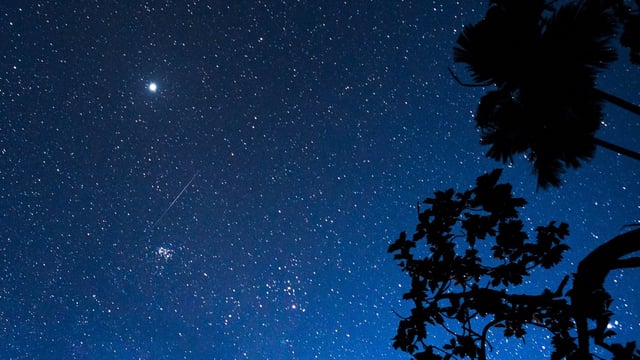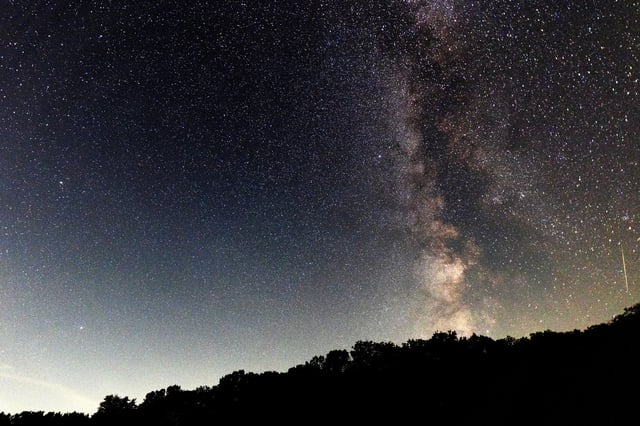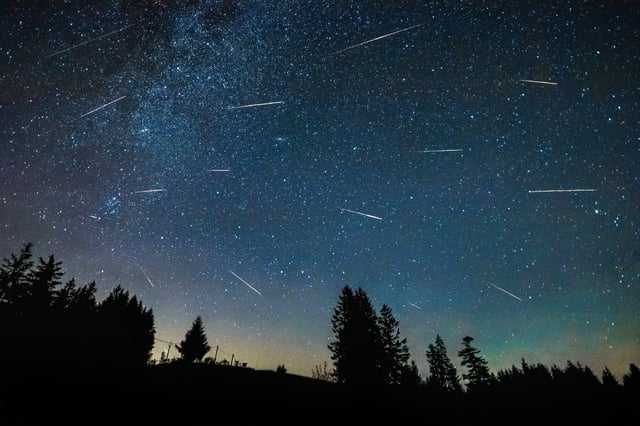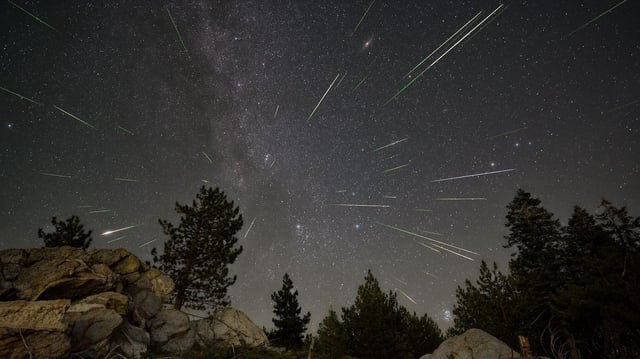Overview
- An 84%-illuminated waning gibbous Moon washed out fainter Perseids during the Aug. 12–13 peak, cutting visible rates to about 10–20 meteors per hour versus 40–50 under dark skies.
- The shower reached its peak as Earth crossed debris from comet 109P/Swift–Tuttle, yielding fast meteors and occasional fireballs that still pierced lunar glare.
- Optimal viewing windows remain from midnight to 5:30 a.m. local time—particularly between 2 a.m. and 4 a.m.—when Perseus climbs higher and moonlight interference dips.
- Experts advise heading to dark-sky locations away from city lights, using terrain or buildings to block the Moon, reclining for a wide view, and allowing 15–30 minutes for eyes to adapt.
- Those hindered by moonlight, weather or light pollution can turn to livestreams such as the Virtual Telescope Project and Global Meteor Network; clearer shows are likely on subsequent nights as the Moon wanes.



